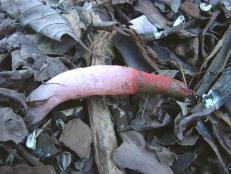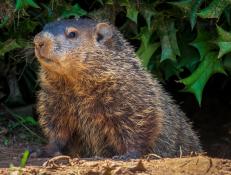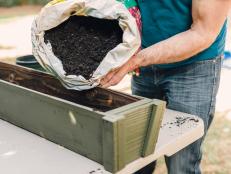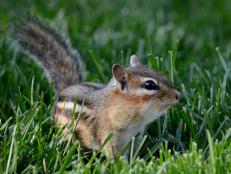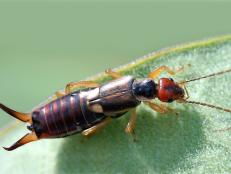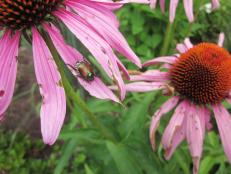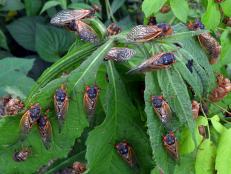Mystery Critter: Scale
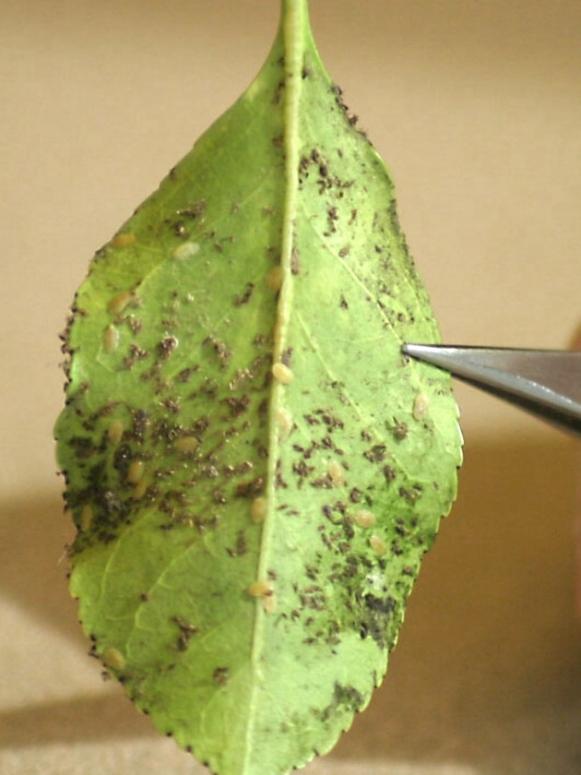
If you turn over a leaf and find dozens of motionless brown or cream-colored specks that resemble grains of rice, and maybe a few tiny crawlers, you've found a scale infection. Scale insects are common and often serious pests of ornamental shrubs and trees. They do their damage by sucking out the plant's juices. Often their work goes unnoticed until leaves start turning yellow in splotches and the shrub or tree begins to look like there's something amiss.
Usually most of the insects are found on the undersides of the leaves and on the stems of the plant. If the infestation has been there long enough, the leaves fall off, the plant loses vigor and sometimes the whole shrub dies.
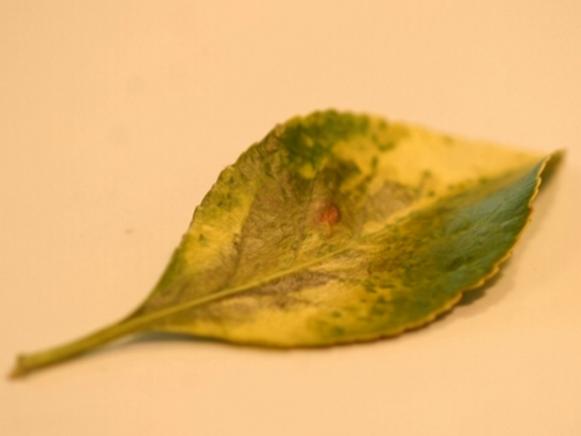
To combat scale most effectively, it's best to know which kind it is--and there are at least 150 different kinds to choose from--but mainly it's important to know if it's a soft scale or an armored one. Take a few leaves to your local extension agent and get the scale identified. For euonymus scale, the males are cream-colored and rice-grain-like, and the females are dark and have the shape of a pear or an oyster shell. The crawlers look like tiny, moving specks of dust.
In general, conventional sprays don't work on the adults and are only effective if crawlers are present. But pesticides also harm scale's natural predators.
Control seems to work best if you first remove heavily infested branches and destroy them. Spray with horticultural oil or insecticidal soap when crawlers are present (shake a branch over a white piece of paper and look for moving specks). Repeat in a couple of weeks. Crawlers emerge at different times, depending on the type of scale. Ask your extension agent for timing and frequency recommendations. (In late winter or early spring, before bud break, you can spray with dormant oil. Oil products that are labeled as summer or Volck can be sprayed during either the dormant or the growing season, using different concentrations that are specified on the label.)
Scale can often be so devastating on euonymus that shrubs are killed to the ground--one good reason to avoid planting susceptible species.







